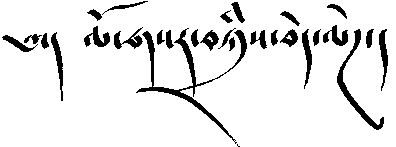Brief Information on the Kingdom of Nepal
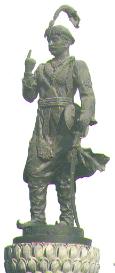
King Prithvi, the Great
History
of Nepal
Geology of Nepal
Economy of Nepal
People of Nepal
Religions in Nepal
The Government
Cities of Nepal
Festivals of Nepal
Highest Mountains of the World
National Parks of Nepal

HISTORY
For centuries the Kingdom of Nepal was divided into many principalities.
Kirats ruled in the east, the Newars in the Kathmandu Valley, while Gurungs and Magars
occupied the mid-west. The Kirats ruled from 300 BC and during their reign, emperor Ashoka
arrived from India to build a pillar at Lumbini in memory of Lord Buddha. The Kirats were
followed by the Lichhavis whose descendants today are believed to be the Newars of the
Kathmandu Valley. During this period, art thrived in Nepal and many of the beautiful
woodcarvings and sculptures that are found in the country belong to this era. With the end
of the Lichhavi dynasty, Malla kings came to power in 1200 AD and they also contributed
tremendously to Nepal's art and culture. However, after almost 600 years of rule, the
kings were not united among themselves and during the late 18th century, Prithvi Narayan
Shah, King of Gorkha, conquered Kathmandu and united Nepal into one kingdom. Recognizing
the threat of the British Raj in India, he dismissed European missionaries from the
country and for more than a century, Nepal remained in isolation. During the mid-l9th
century Jung Bahadur Rana became Nepal's first prime minister to wield absolute power. He
set up an oligarchy and the Shah Kings remained figure-heads. The Ranas were overthrown in
a democracy movement of the early 1950s. Today, Nepal enjoys a multiparty democratic
system with a constitutional Monarch. The Kingdom of Nepal covers an area of 147,181 square kilometers, and stretches 145-241
kilometers north to south and 850 kilometers west to east. The country is located between
India in the south and China in the north. At latitudes 26 and 30 degrees north and
longitudes 80 and 88 degrees east, Nepal is topographically divided into three regions:
the Himalaya to the north, the hills consisting of the Mahabharat range and the Churia
Hills, and the Terai to the south. Elevations are varied in the kingdom. The highest point
is Mt. Everest (8848 m) in the north and the lowest point (70 meters above sea level) is
located at Kechana Kalan of ihapa District. Altitude increases as you travel south to
north To the north temperatures are below -40 degrees Celsius and in the Terai,
temperatures rise to 40 degrees Celsius in the summer. During June, July and August, the
kingdom is influenced by monsoon clouds. The Hills Terai People, Culture, and Languages. In Nepal, ethnical cultural
groups are diverse and many of them have their own languages and customs. However they can
be geographically categorized according to their habitats. The Sherpas who are of
Tibeto-Burman stock mainly occupy the higher hills of eastern and central Nepal. The Solu
Khumbu region, where the world's tallest peak Mt. Everest stands, is inhabited by Sherpas.
Generally they are Buddhist but some follow the Bon, the pre-Buddhist religion of Tibet,
and other religions. The Sherpas are famed for their valor and mountaineering skills and
are professionally involved in many mountain expeditions. Today, Sherpas have joined other
occupations as well, like business, administration and politics. The population of the Kathmandu Valley consists mostly of Newars. They speak Nepalbhasa
and practice Hinduism and Buddhism. Many families celebrate both Hindu and Buddhist
festivals. Their culture also reflects tantrism and animism. Newars are accomplished in
commerce and most enterprises in the heart of the Valley are run by them. Historically,
they are well known for establishing the three artistically beautiful cities of Patan,
Bhaktapur and Kathmandu. The inhabitants of the hill flanks surrounding Kathmandu Valley are mostly Tamangs, who
make up one of the largest Tibeto-Burman ethnic groups in the Kingdom. In the Tibetan
language, Tamang means "horse soldier" which gives us an idea about their past
occupation. Today, they farm and work as semi-skilled and unskilled labourers. Tamangs
practice Tibetan Lamaism or the Bon religion and speak their own language. Another ethnic group closely resembling the Magars in many aspects are the Gurungs.
They also live in the western and central hills of the country although further to the
east. Of Tibeto-Burman stock, the Gurungs have their own distinct language and practice
shamanism. Many find employment in the British and Indian armies. The Khas are the Bahuns and Chhetris who formed their own kingdoms in the far-west.
They are Hindus, and Nepali, which is the country's official language, was originally
spoken by the Khas. Traditionally, the Bahuns were priests and are better educated than
most ethnic groups. In fact, many occupy important government and educational posts in the
kingdom today. The Chhetris have traditionally been known as warriors. Those living in the
higher hills in the far western region lead hard lives because of lack of rain and farming
is practiced in the river valleys and on the hill flanks. The Tharus are one of the original ethnic groups to inhabit the Terai. The Majhi,
Danuwar, Rajbansi, Darai, Satar, and Dhimal also occupy the flat lands. The Tharus have
their own unique religion and practice animism. Their culture is especially suited for the
hot plains and they are actually Immune to malaria. They have Mongoloid features and speak
their own language. There is much migration going on in the country now and the cultural
definition of the people by area is difficult. Urban population is increasing by 7% each
year and most cultures have intermingled. Religious practices are an important part of the lives of the Nepalese people.
Mythologies of various Hindu gods and goddesses abound in this country and cultural values
are based on the philosophies of holy books like the Swasthani, Gita, Ramayana, etc. Women and children visit neighborhood shrines at dawn to offer worship to the gods.
Holding plates of rice, flowers, and vermilion powder, they perform Puja by lighting
incense, ringing the temple bell, and applying tika, a red paste, on their foreheads.
Passersby stop at temples and show their reverence to the gods by spending a few minutes
praying. Occasionally, groups of men sit near temples playing music and singing hyms until
late night. In Nepal, Hinduism and Buddhism are the two main religions. The two have co-existed
down the ages and many Hindu temples share the same complex as Buddhist shrines. Hindu and
Buddhist worshippers may regard the same god with different names while performing
religious rites. Though Nepal is the only Hindu Kingdom in the world, many other religions like Islam,
Christianity. and Boo are practiced here. Some of the earliest inhabitants like the Kirats
practice their own kind of religion based on ancestor worship and the Tharus practice
animism. Over the years, Hinduism and Buddhism have been influenced by these practices
which have been modified to form a synthesis of newer beliefs. As a result, visitors to this country may often find the religious practices in Nepal
difficult to follow and understand. But this does not prevent one from enjoying the
different traditional ceremonies and rituals of Nepalese culture. It is indeed a totally
new experience of religious fervor. Hinduism. Thousands of gods and goddesses make up the Hindu pantheon. Brahma, Vishnu,
and Shiva are the three major Hindu gods who have their own characteristics and
incarnations. Each god has his own steed which is often seen kneeling faithfully outside
that god's temple. Symbolic objects are carried by the multiple hands of each deity which
empowers them to perform great feats. Buddhism. Sakyamuni Buddha is the founder of Buddhism who lived and taught in this part
of the world during the sixth century BC. The great stupas of Swayambhunath and
Bouddhanath are among the oldest and most beautiful worship sites in the Kathmandu Valley. The spinning of prayer wheels, prostrating pilgrims, collective chants and burning
butter lamps are some Buddhist practices often encountered by tourists. A slip of paper
bearing a mantra is kept inside the wheels so that prayers are sent to the gods when the
wheel is spun. Scenes from the Buddha's life and Buddhist realms are depicted on than gka
scroll paintings which are used during meditation and prayer ceremonies. Many Buddhist
followers are seen performing these practices in Swayambhunath, Bouddhanath, and at other
Buddhist sites around the Valley. Nepal is a developing country with an agricultural economy. In recent years, the
country's efforts to expand into manufacturing industries and other technological sectors
have achieved much progress. Farming is the main economic activity followed by
manufacturing, trade and tourism. The chief sources of foreign currency earnings are merchandise export. services,
tourism and Gurkha remittances. The annual Gross Domestic Product (GDP) is about US$ 4.3
billion. Agriculture. Eight out of 10 Nepalese are engaged in farming and it accounts for more
than 40% of the GDR Rolling fields and neat terraces can be seen all over the Terai
flatlands and the hills of Nepal. Even in the highly urbanized Kathmandu Valley, large
tracts of land outside the city areas are devoted to farming. Rice is the staple diet in
Nepal and around three million tons are produced annually. Other major crops are maize,
wheat, millet and barley. Besides food grains, cash crops like sugarcane, oil seeds,
tobacco, jute and tea are also cultivated in large quantities. Manufacturing. Manufacturing is still at the developmental stage and it represents less
than 10% of the GDP. Major industries are woolen carpets, garments, textiles, leather
products, paper and cement. Other products made in Nepal are steel utensils, cigarettes,
beverages and sugar. There are many modern large-scale factories but the majority are
cottage or small-scale operations. Most of Nepal's industry is based in-the Kathmandu
Valley and a string of small towns in the southern Terai plains. Trade. Commerce has been a major occupation in Nepal since early times. Being situated
at the crossroads of the ancient trans-Himalayan trade route, trading is second nature to
the Nepalese people. Foreign trade is characterized mainly by import of manufactured
products and export of agricultural raw materials. Nepal imports manufactured goods and
petroleum products worth abotit USs 1 billion annually. The value of exports is about USs
315 million. Woolen carpets are Nepal's largest export, earning the country over USs 135
million per year. Garment exports account for more than US$ 74 million and handicraft
goods bring in about US$ 1 million. Other important exports are pulses, hides and skins,
jute and medicinal herbs. Tourism. In 1996, a total of 390,000 tourists visited Nepal, making tourism one of the
largest industries in the Kingdom. This sector has been expanding rapidly since its
inception in the 1950s, thanks to Nepal's natural beauty, rich cultural heritage and the
diversity of sight-seeing and adventure opportunities available. At one time, tourism used
to be the biggest foreign currency earner for the country. Nepal earned over US$ 116
million from tourism in 1995. Nepal has a bicameral legislature. The lower house, the House of Representatives,
consists of 205 members. Members to the lower house are elected every five years. The
upper house, the National Assembly, is made up of 60 members who have a six-year tenure in
office. One-third of the members retire every two years. Fifteen members are elected by
the local government, 35 members by proportional representation, and, 10 members are
nominated by the King. Administrative Divisions. Nepal is divided into five development regions, 14 zones, and
75 districts. Each zone consists of four to eight districts. Sixteen districts lie in the
Himalayan region, 39 in the hills and 20 in the Terai. The lowest local level
administrative unit is the Village Development Committee (VDC). There are 3,996 VDCs in
the country.
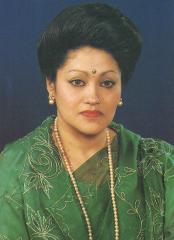
Their Majesty the King and
Queen of Nepal  The Himalaya
The Himalaya
The Himalayan range makes up the northern border of the country and represents 16% of the
total land area of Nepal. Peaks like Mt. Everest (8848 m), Kanchenjunga (8598 m), and
Dhaulagiri (8137 m) are found here and sparse vegetation is found up to 4,500 m. Some of
Nepal's most beautiful animal and plant life are also found here. Although rare, the snow
leopard and danphe bird are much talked about sights among visitors. The people in this
region produce and sell cheese besides working as porters and guides. Many also trade with
Tibet and travel across the border to sell their goods.
 This region covers 65% of the total land area of the country. Kathmandu, the
capital of Nepal is located here. Elevations range from 500 to 3,000 m above sea level.
During summer the temperature reaches an average of 32 degrees Celsius. Winters are cold,
temperature reaching -degree Celsius sometimes. Areas in the eastern hills receive more
rainfall because of the monsoon clouds which come from the south-east. The rivers in the
west, which do not receive much rain-fall are dependent upon the melted snow that flow
down the Himalaya. Wild animals to be found here are the spotted leopard, barking deer,
and Himalayan black bear. The hilly region is also popular for different kinds of birds.
Over four hundred species of birds are found here. The people in this region have gained
from the growth in the tourism industry. The people here work as trekking guides and
porters and also sell garments and carpets to add to their income.
This region covers 65% of the total land area of the country. Kathmandu, the
capital of Nepal is located here. Elevations range from 500 to 3,000 m above sea level.
During summer the temperature reaches an average of 32 degrees Celsius. Winters are cold,
temperature reaching -degree Celsius sometimes. Areas in the eastern hills receive more
rainfall because of the monsoon clouds which come from the south-east. The rivers in the
west, which do not receive much rain-fall are dependent upon the melted snow that flow
down the Himalaya. Wild animals to be found here are the spotted leopard, barking deer,
and Himalayan black bear. The hilly region is also popular for different kinds of birds.
Over four hundred species of birds are found here. The people in this region have gained
from the growth in the tourism industry. The people here work as trekking guides and
porters and also sell garments and carpets to add to their income.
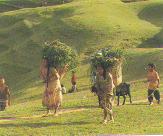 The Terai covers 17% of the total land area of Nepal. It provides
excellent farming land and the average elevation of flatlands is 100 to 300 m above
sea-level. Sub-tropical forest areas, marshes, and wildlife which include the Royal Bengal
tiger, onehorned rhino, and the gharial crocodile are found here. After the eradication of
malaria in the 1960s, many people migrated to the Terai in search of farming land. Today,
about 48% of the country's population occupies this region. Flat farmlands and the
region's flexible topography have given rise to many industries. The main industrial towns
are Biratnagar, Butwal, Bhairawa, Birgunj, and Janakpur. Calcutta, a metropolitan city in
India is the closest sea-port. It lies 1,000 kilometers away from Birguni.
The Terai covers 17% of the total land area of Nepal. It provides
excellent farming land and the average elevation of flatlands is 100 to 300 m above
sea-level. Sub-tropical forest areas, marshes, and wildlife which include the Royal Bengal
tiger, onehorned rhino, and the gharial crocodile are found here. After the eradication of
malaria in the 1960s, many people migrated to the Terai in search of farming land. Today,
about 48% of the country's population occupies this region. Flat farmlands and the
region's flexible topography have given rise to many industries. The main industrial towns
are Biratnagar, Butwal, Bhairawa, Birgunj, and Janakpur. Calcutta, a metropolitan city in
India is the closest sea-port. It lies 1,000 kilometers away from Birguni.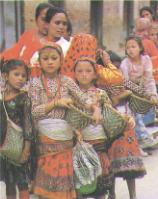 A wide variety of ethnic groups occupy
the mid-hills. The Kirats or Limbus and Rais inhabit the east. During the 7th century BC,
they established a dynasty in the Kathmandu Valley and ruled it for 1,000 years. They are
not originally Hindus or Buddhists but are ancestor worshippers. However, today, many
embrace Hinduism. In the former days, they were warriors and skilled hunters. The Kirats
speak Tibeto-Burman languages. Many serve in the British Army today and have earned a
repulation as the brave Gurkhas.
A wide variety of ethnic groups occupy
the mid-hills. The Kirats or Limbus and Rais inhabit the east. During the 7th century BC,
they established a dynasty in the Kathmandu Valley and ruled it for 1,000 years. They are
not originally Hindus or Buddhists but are ancestor worshippers. However, today, many
embrace Hinduism. In the former days, they were warriors and skilled hunters. The Kirats
speak Tibeto-Burman languages. Many serve in the British Army today and have earned a
repulation as the brave Gurkhas. 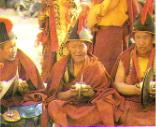 The Magars live in the western and central
hills of Nepal. They had their own kingdoms until the 18th century and were closely
associated with the Hindu Indo-Aryans in the west. Much of their cultural practices have
been influenced by Chhetris, and today it is difficult to make any difference in the
housing, dressing and farming practices of the two. The Magars have been sought after by
the British and Indian armies and a great number serve in the Gurkha regiments.
The Magars live in the western and central
hills of Nepal. They had their own kingdoms until the 18th century and were closely
associated with the Hindu Indo-Aryans in the west. Much of their cultural practices have
been influenced by Chhetris, and today it is difficult to make any difference in the
housing, dressing and farming practices of the two. The Magars have been sought after by
the British and Indian armies and a great number serve in the Gurkha regiments.